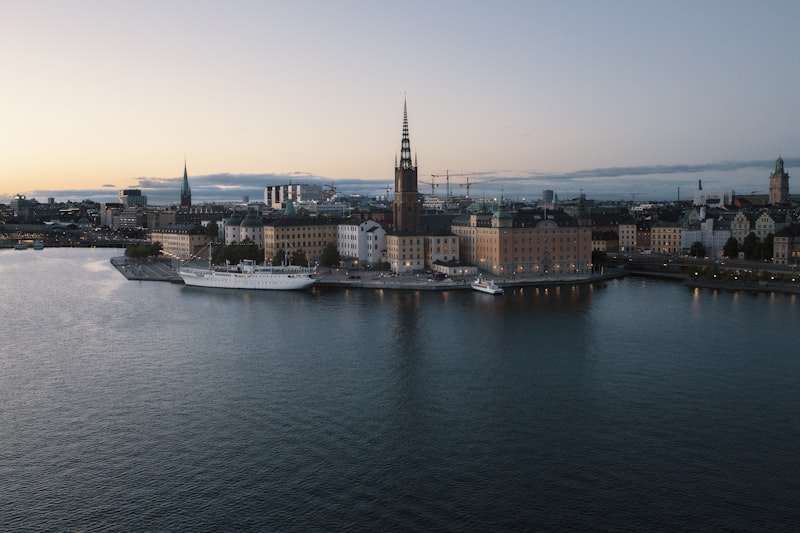In the battle between human innovation and the raw power of nature, our sophisticated structures and careful planning sometimes prove no match for Earth's most extreme forces. When disaster strikes, insurance becomes the financial backstop that allows societies to rebuild. These are the stories behind the most expensive natural disaster insurance claims in history—events that reshaped not just landscapes, but the entire insurance industry.
The Rising Cost of Catastrophe
The figures are staggering. Over the past 50 years, the cost of natural disasters has increased exponentially. According to Swiss Re Institute, a leading insurance research organization, total economic losses from natural and man-made catastrophes in 2022 alone exceeded $275 billion globally, with insured losses reaching $125 billion—marking the fifth time in six years that insured catastrophe losses surpassed $100 billion.
"We're witnessing a fundamental shift in the scale of disaster-related losses," explains Dr. Maya Chen, catastrophe modeling expert. "Three key factors are driving this: increasing concentration of assets in vulnerable areas, rising value of those assets, and most significantly, more frequent and intense extreme weather events linked to climate change."
The result? Insurance claims of a magnitude that would have been unimaginable just a generation ago.
Hurricane Katrina (2005): The Disaster That Changed Everything
Until 2005, the insurance industry had never faced a natural disaster resulting in more than $30 billion in insured losses. Hurricane Katrina shattered that ceiling with devastating force, generating approximately $65 billion in insured losses (adjusted to 2023 dollars)—a figure that remains among the highest in history.
The catastrophe exposed critical vulnerabilities in both infrastructure and insurance systems. New Orleans' levee failures revealed the false security of flood protection, while the massive flooding that resulted exposed a critical gap in standard homeowners insurance policies: flood damage exclusion.
"Katrina fundamentally changed how we think about catastrophe risk," says Richard Torres, former insurance commissioner who worked on post-Katrina reforms. "Before Katrina, catastrophe models focused primarily on wind damage. After Katrina, modeling expanded to include complex flooding scenarios, infrastructure vulnerability, and even social factors like evacuation compliance."
The human impact was heartbreaking—over 1,800 lives lost and hundreds of thousands displaced. For many survivors, the insurance nightmare often proved as traumatic as the storm itself. Thousands of homeowners discovered too late that their policies covered wind damage but not the flooding that destroyed their homes. Legal battles over the "wind versus water" cause of damage continued for years, with some cases reaching the Supreme Court.
Perhaps Katrina's most lasting insurance legacy was the transformation of the National Flood Insurance Program (NFIP). Previously a relatively obscure government program, NFIP suddenly found itself at the center of national attention—and crushing debt. The program had to borrow $16.6 billion from the Treasury just to pay Katrina claims, fundamentally altering its financial structure.
Tohoku Earthquake and Tsunami (2011): The Triple Catastrophe
On March 11, 2011, Japan experienced what insurers now call a "compound catastrophe"—a cascade of disastrous events that exponentially increased damages. The 9.0 magnitude earthquake, one of the five strongest ever recorded, triggered a devastating tsunami with waves reaching heights of 133 feet (40.5 meters). These natural disasters then precipitated the nuclear emergency at the Fukushima Daiichi plant.
The financial impact was unprecedented: total economic losses estimated at $210 billion, with insured losses reaching approximately $40 billion. But the numbers only tell part of the story.
"What made Tohoku unique from an insurance perspective was the complexity of overlapping catastrophes," explains Hiroshi Takahashi, a Japanese insurance analyst. "We had earthquake damage, tsunami destruction, nuclear contamination, business interruption, and supply chain disruption all occurring simultaneously. No catastrophe model had ever contemplated such a compound disaster."
For global businesses, the event revealed unprecedented vulnerabilities. Factories thousands of miles from Japan suddenly found themselves unable to operate due to supply chain disruptions. This triggered massive business interruption claims from companies that had experienced no physical damage whatsoever. The result was a complete rethinking of supply chain risk and the introduction of new specialty insurance products designed specifically for global supply network vulnerabilities.
Perhaps most significantly, the disaster forced a reevaluation of nuclear risk. Previously considered among the safest energy sources from an insurance perspective, the Fukushima disaster revealed the catastrophic potential of nuclear accidents. The Japanese government ultimately bore most of these costs, as private insurance explicitly excluded nuclear contamination.
Hurricane Ian (2022): The Modern Megastorm
When Hurricane Ian slammed into Florida's Gulf Coast in September 2022, it combined the worst elements of previous hurricanes: devastating wind damage like Hurricane Andrew, widespread flooding like Hurricane Katrina, and massive storm surge like Hurricane Sandy.
The result was the second-costliest hurricane in U.S. history, with insured losses reaching approximately $60 billion. But what made Ian particularly significant was how it exposed the vulnerability of Florida's troubled insurance market.
"Florida was already facing an insurance crisis before Ian made landfall," explains insurance attorney Melissa Sanchez. "Years of litigation, fraud claims, and smaller storms had already pushed many insurers to leave the market. Ian hit at precisely the worst possible moment."
Six Florida insurance companies had already declared insolvency in the months before Ian's arrival. After the storm, several more followed, leaving hundreds of thousands of homeowners scrambling to find coverage through Florida's insurer of last resort, Citizens Property Insurance Corporation, which itself faced financial strain from the deluge of new policies.
The storm highlighted a troubling reality: in some high-risk areas, private insurance markets may become functionally unviable as climate change increases the frequency and severity of catastrophic weather events. This has prompted difficult questions about coastal development, government involvement in insurance markets, and the sustainability of building in certain vulnerable locations.
The 2017 Atlantic Hurricane Season: The Year That Broke Records
If a single year could be said to have transformed the catastrophe insurance landscape, 2017 would be a leading candidate. Hurricanes Harvey, Irma, and Maria struck in rapid succession, collectively generating over $92 billion in insured losses.
Hurricane Harvey's unprecedented rainfall—more than 60 inches in some locations—inundated Houston, America's fourth-largest city. With 200,000 homes damaged or destroyed, the event became one of the largest residential flooding disasters in U.S. history. Yet astonishingly, approximately 80% of homeowners in Houston lacked flood insurance, leaving many financially devastated.
Just as insurers were beginning to process Harvey claims, Hurricane Irma arrived, carving a path of destruction across the Caribbean before striking Florida. Two weeks later, Hurricane Maria devastated Puerto Rico, causing catastrophic infrastructure damage that continues to affect the island today.
"The 2017 season stretched insurance resources to their absolute limit," recalls claims adjuster Eduardo Rivera. "We simply didn't have enough qualified adjusters to handle three major hurricanes in succession. Many policyholders waited months just for an initial assessment visit."
For reinsurers—companies that provide insurance for insurance companies—2017 marked a turning point. After years of price declines due to abundant capital in the reinsurance market, rates began rising significantly, eventually translating to higher premiums for consumers in catastrophe-prone regions.
The storms also accelerated the adoption of new technologies in claims assessment. Unable to physically reach many damaged properties, insurers deployed drones, satellite imagery, and artificial intelligence to assess damage remotely—technologies that have since become standard industry tools.
Australian Black Summer Bushfires (2019-2020): The Climate Connection
When massive bushfires swept across Australia during the 2019-2020 summer, they burned an area larger than many European countries—over 46 million acres. The insurance impact was equally staggering: approximately $1.3 billion AUD in insured losses from over 20,000 claims.
Beyond the immediate financial impact, the fires permanently altered how Australian insurers model catastrophe risk. "Before Black Summer, our models considered bushfires a localized peril," explains Australian actuarial scientist Dr. James Wong. "These fires demonstrated that under the right conditions, bushfires can become a systemic, widespread catastrophe affecting multiple states simultaneously."
Climate scientists had been warning for years that Australia would face increasingly severe fire seasons due to climate change. The Black Summer fires dramatically validated these predictions, forcing insurers to incorporate climate projections more aggressively into their risk models.
The result has been rising premiums in fire-prone areas, with some locations becoming effectively uninsurable. This phenomenon—climate-induced insurance unavailability—has since emerged as a growing concern in high-risk regions worldwide, from California's wildland-urban interface to flood-prone coastal communities.
"We're approaching a pivotal moment in insurance history," warns climate risk specialist Anika Patel. "If current trends continue, we may see entire regions where private market insurance simply ceases to be available at any price. When that happens, the financial burden either falls entirely on property owners or requires government intervention."
COVID-19 Pandemic: The Disaster That Wasn't Covered
While not a natural disaster in the traditional sense, the COVID-19 pandemic generated one of the most significant insurance controversies in modern history: business interruption claims.
When government lockdowns forced businesses worldwide to close their doors, many turned to their business interruption insurance policies, expecting coverage for lost income. What followed was an unprecedented wave of claim denials and subsequent litigation.
"Most business interruption policies required physical damage to trigger coverage," explains insurance law professor Martin Greene. "Insurers argued that viral contamination didn't constitute physical damage, while businesses countered that the inability to use their physical premises should qualify."
The ensuing legal battles played out in courts worldwide, with mixed results. In the U.S., insurers prevailed in approximately 75% of cases, while European courts more frequently sided with policyholders. The controversy highlighted a critical gap in risk transfer mechanisms for pandemic risk.
The pandemic also accelerated a trend that had begun after other major catastrophes: the rise of parametric insurance. Unlike traditional insurance that pays based on actual losses after extensive adjustment, parametric insurance pays a predetermined amount when objective triggers occur—such as an earthquake above a certain magnitude or a hurricane with winds exceeding a specific speed.
"Parametric insurance eliminates the ambiguity that generated so much litigation during COVID," says insurance innovator Sarah Chen. "There's no debate about coverage—if the parameter is triggered, payment occurs automatically. For catastrophe coverage, this can mean receiving funds within days rather than months."
Rising Seas, Rising Costs: The Next Insurance Crisis
As significant as past catastrophe claims have been, insurance experts warn that they may pale in comparison to what lies ahead. The most expensive natural disaster in history may not be a sudden catastrophe like a hurricane or earthquake, but rather the slow-motion crisis of sea level rise.
A recent analysis by First Street Foundation found that if sea levels rise as projected, approximately $34 billion in coastal real estate value could face chronic flooding by 2050. By the end of the century, millions of coastal properties may become effectively uninhabitable.
The insurance implications are profound. "We're already seeing the early signals," cautions coastal risk specialist Dr. Elena Rodriguez. "Premium increases in high-risk coastal zones, more restrictive coverage terms, and in some cases, insurers simply withdrawing from certain markets entirely."
Unlike sudden catastrophes where insurance pays for rebuilding, sea level rise presents a fundamentally different challenge. "Insurance is designed to cover unexpected, sudden losses, not inevitable, gradual ones," explains Rodriguez. "No one insures against sunset—it's a certainty. As sea level rise makes flooding a certainty in some locations, those properties will become uninsurable."
Some innovative approaches are emerging. For example, "parametric retreat coverage" provides funds not to rebuild in the same vulnerable location, but to relocate to safer ground. Community-based insurance pools are being explored to spread risk across entire municipalities. And real estate developers are incorporating insurance costs into decades-long projections when planning coastal developments.
But the stark reality remains: the greatest insurance challenges may lie ahead, not behind.
The Insurance Innovation Imperative
As catastrophic losses continue to mount, the insurance industry faces an existential question: how to remain solvent while continuing to provide protection against increasingly frequent and severe disasters.
Several approaches are emerging:
- Public-Private Partnerships: Government backstops for catastrophic losses, similar to terrorism insurance programs developed after 9/11
- Catastrophe Bonds: Financial instruments that transfer risk directly to capital markets
- Resilience Credits: Premium discounts for investments in disaster mitigation
- Microinsurance: Low-cost, limited-coverage options for those who can't afford traditional insurance
- Community Parametric Insurance: Coverage that pays entire communities based on objective disaster triggers
"The next generation of catastrophe insurance will look fundamentally different from what we've known," predicts insurance futurist David Liang. "The traditional model of post-disaster reimbursement is giving way to pre-disaster financing, community-based coverage, and mitigation incentives."
These innovations couldn't come at a more critical time. As the cost of natural disasters continues to escalate, the gap between economic and insured losses grows increasingly wider. In developing countries, as little as 5% of natural disaster losses are covered by insurance, leaving already vulnerable populations without a financial safety net when catastrophe strikes.
"Ultimately, insurance is about more than paying claims—it's about building resilience," concludes Dr. Chen. "The most expensive natural disaster claims in history have taught us valuable lessons. The question now is whether we'll apply those lessons quickly enough to face the challenges ahead."






